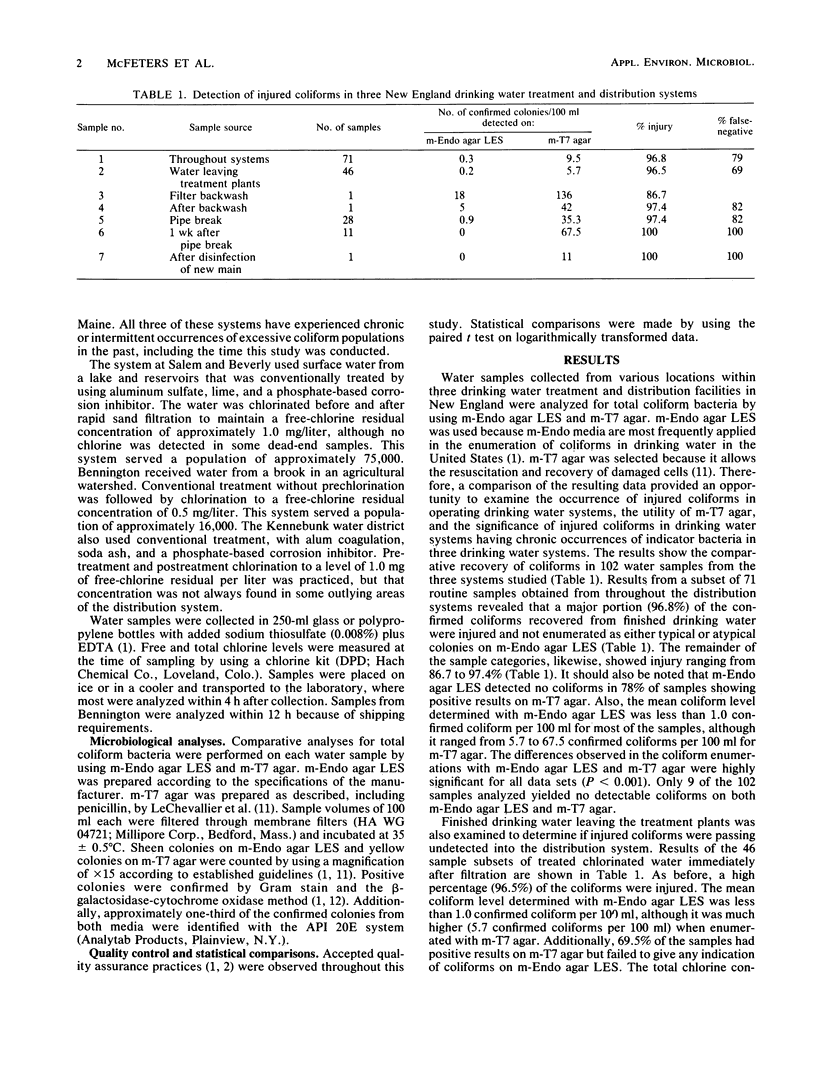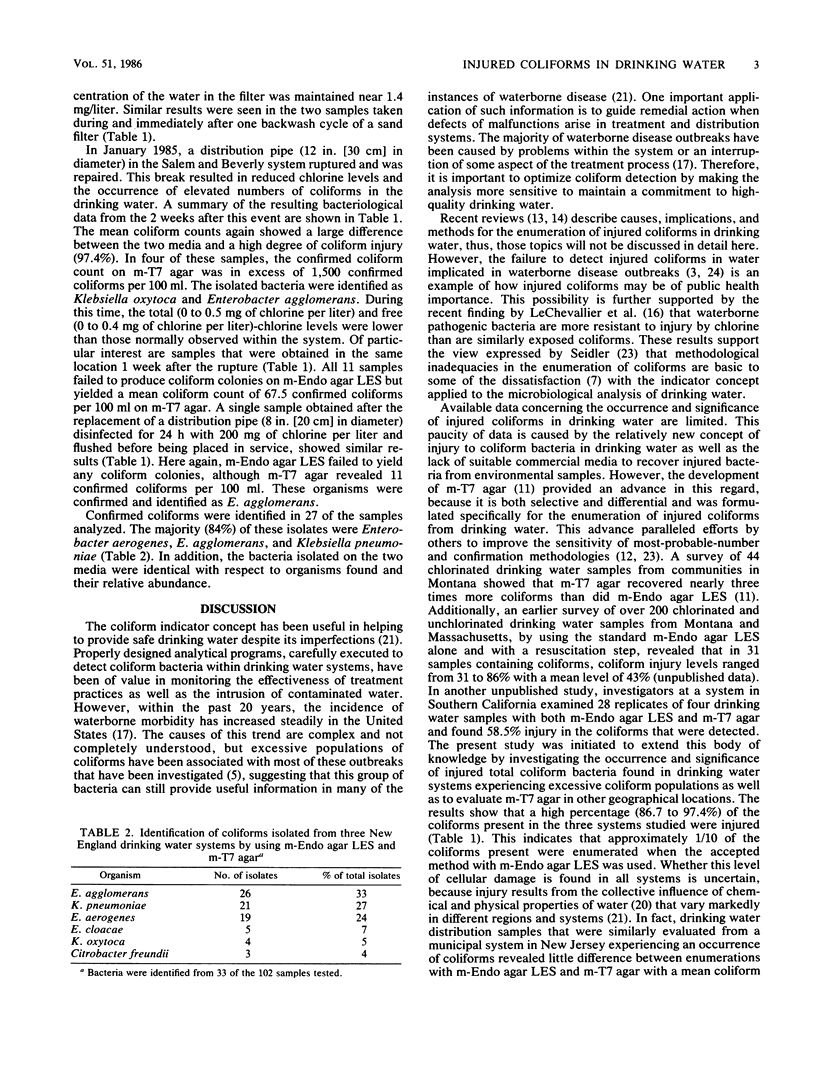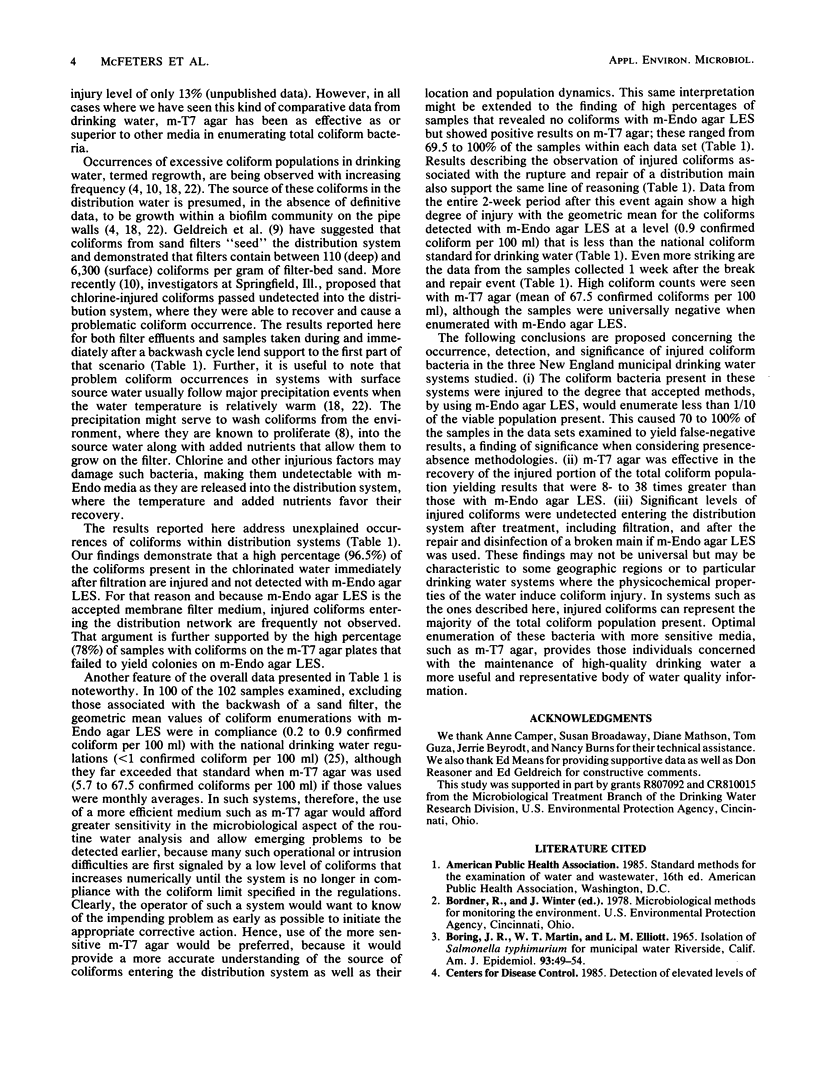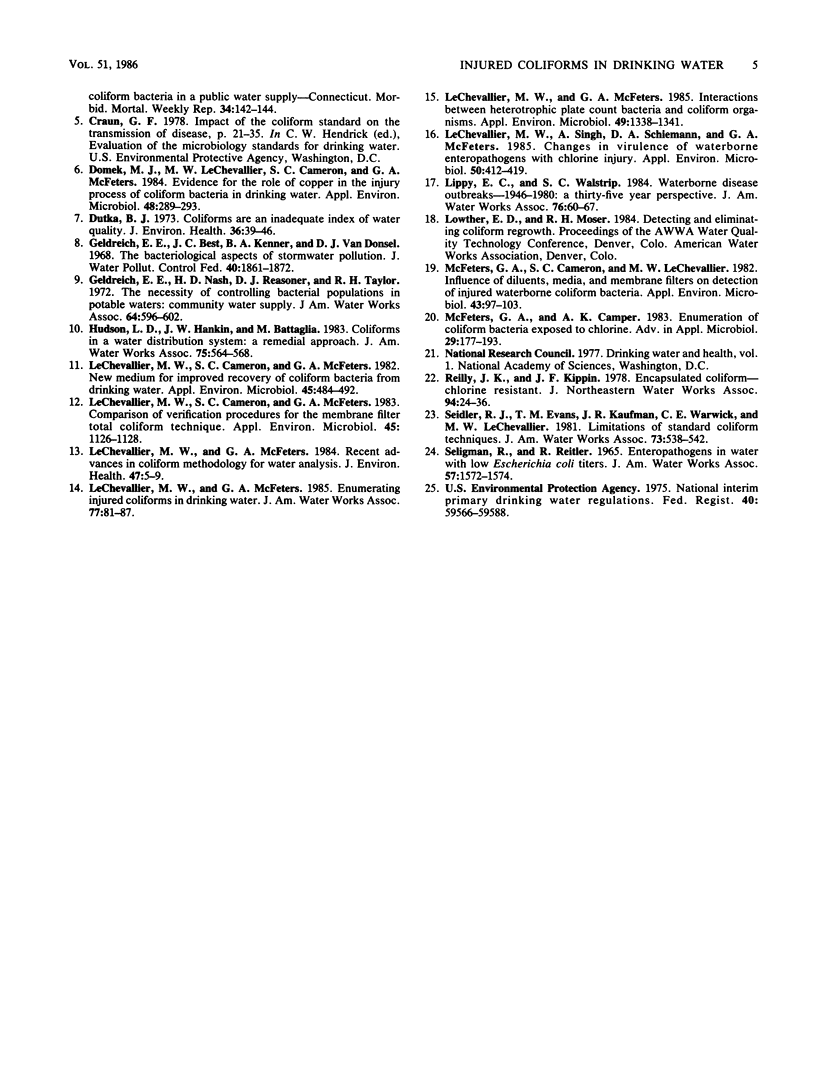Abstract
Coliforms were enumerated by using m-Endo agar LES and m-T7 agar in 102 routine samples of drinking water from three New England community water systems to investigate the occurrence and significance of injured coliforms. Samples included water collected immediately after conventional treatment, during the backwash cycle, at various points in the distribution system, and 1 week after the break and subsequent repair of a distribution main. Injured coliforms in these samples averaged greater than 95%. m-T7 agar yielded 8- to 38-fold more coliforms than did m-Endo agar LES. The geometric mean of coliforms recovered by m-Endo agar LES was less than 1 confirmed coliform per 100 ml, although m-T7 agar yielded 5.7 to 67.5 confirmed coliforms per 100 ml. In addition, the majority of these samples giving positive results on m-T7 agar produced no detectable counts on m-Endo agar LES. These findings indicated that coliforms were injured and largely undetected by use of accepted analytical media in the systems examined.
Full text
PDF




Selected References
These references are in PubMed. This may not be the complete list of references from this article.
- Boring J. R., 3rd, Martin W. T., Elliott L. M. Isolation of Salmonella typhi-murium from municipal water, Riverside, California, 1965. Am J Epidemiol. 1971 Jan;93(1):49–54. doi: 10.1093/oxfordjournals.aje.a121227. [DOI] [PubMed] [Google Scholar]
- Domek M. J., LeChevallier M. W., Cameron S. C., McFeters G. A. Evidence for the role of copper in the injury process of coliform bacteria in drinking water. Appl Environ Microbiol. 1984 Aug;48(2):289–293. doi: 10.1128/aem.48.2.289-293.1984. [DOI] [PMC free article] [PubMed] [Google Scholar]
- Geldreich E. E., Best L. C., Kenner B. A., Van Donsel D. J. The bacteriological aspects of stormwater pollution. J Water Pollut Control Fed. 1968 Nov;40(11):1861–1872. [PubMed] [Google Scholar]
- LeChevallier M. W., Cameron S. C., McFeters G. A. Comparison of verification procedures for the membrane filter total coliform technique. Appl Environ Microbiol. 1983 Mar;45(3):1126–1128. doi: 10.1128/aem.45.3.1126-1128.1983. [DOI] [PMC free article] [PubMed] [Google Scholar]
- LeChevallier M. W., Cameron S. C., McFeters G. A. New medium for improved recovery of coliform bacteria from drinking water. Appl Environ Microbiol. 1983 Feb;45(2):484–492. doi: 10.1128/aem.45.2.484-492.1983. [DOI] [PMC free article] [PubMed] [Google Scholar]
- LeChevallier M. W., McFeters G. A. Interactions between heterotrophic plate count bacteria and coliform organisms. Appl Environ Microbiol. 1985 May;49(5):1338–1341. doi: 10.1128/aem.49.5.1338-1341.1985. [DOI] [PMC free article] [PubMed] [Google Scholar]
- LeChevallier M. W., Singh A., Schiemann D. A., McFeters G. A. Changes in virulence of waterborne enteropathogens with chlorine injury. Appl Environ Microbiol. 1985 Aug;50(2):412–419. doi: 10.1128/aem.50.2.412-419.1985. [DOI] [PMC free article] [PubMed] [Google Scholar]
- McFeters G. A., Cameron S. C., LeChevallier M. W. Influence of diluents, media, and membrane filters on detection fo injured waterborne coliform bacteria. Appl Environ Microbiol. 1982 Jan;43(1):97–103. doi: 10.1128/aem.43.1.97-103.1982. [DOI] [PMC free article] [PubMed] [Google Scholar]
- McFeters G. A., Camper A. K. Enumeration of indicator bacteria exposed to chlorine. Adv Appl Microbiol. 1983;29:177–193. doi: 10.1016/s0065-2164(08)70357-5. [DOI] [PubMed] [Google Scholar]


